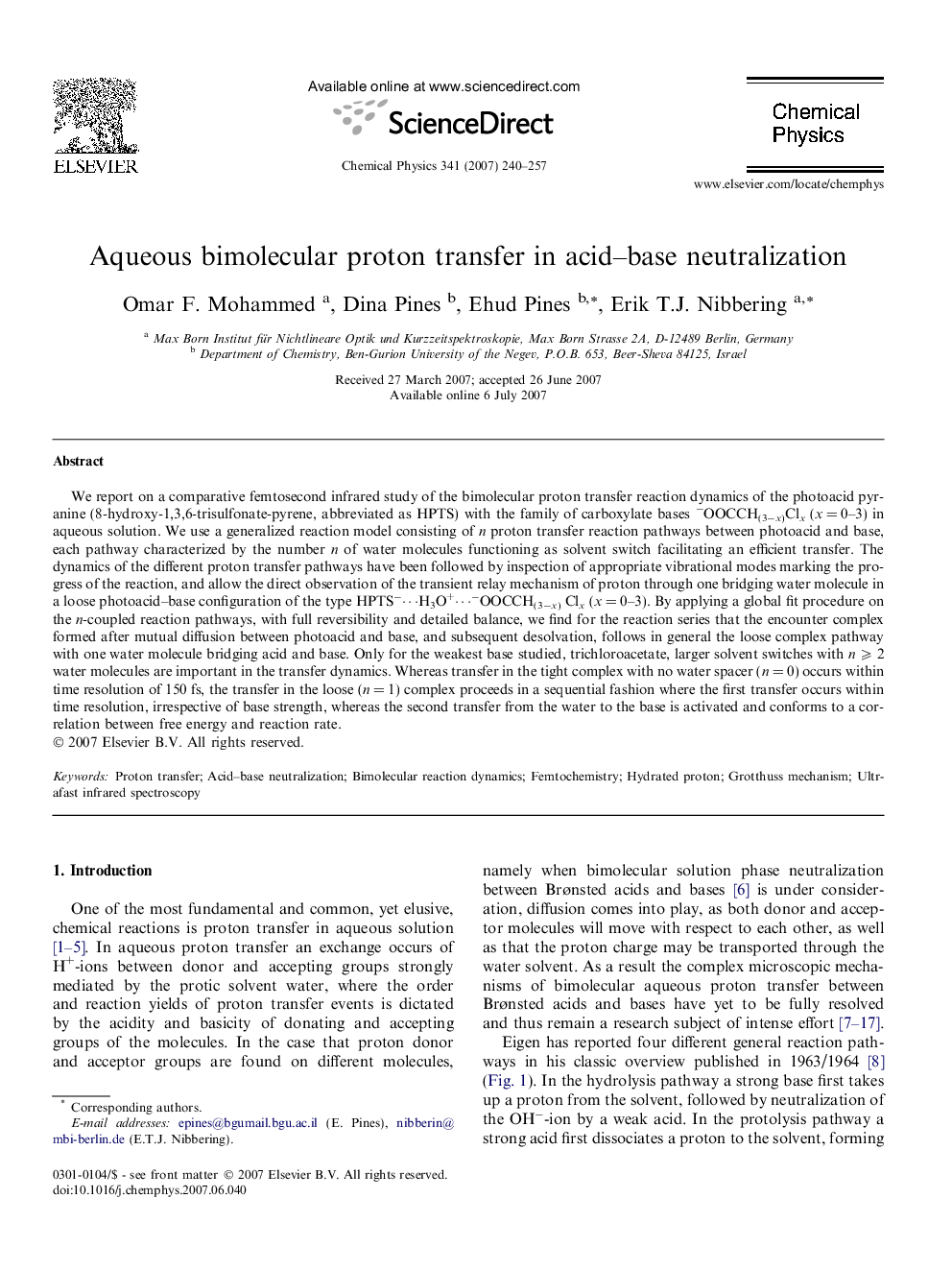| کد مقاله | کد نشریه | سال انتشار | مقاله انگلیسی | نسخه تمام متن |
|---|---|---|---|---|
| 5376105 | 1504317 | 2007 | 18 صفحه PDF | دانلود رایگان |
عنوان انگلیسی مقاله ISI
Aqueous bimolecular proton transfer in acid-base neutralization
دانلود مقاله + سفارش ترجمه
دانلود مقاله ISI انگلیسی
رایگان برای ایرانیان
کلمات کلیدی
موضوعات مرتبط
مهندسی و علوم پایه
شیمی
شیمی تئوریک و عملی
پیش نمایش صفحه اول مقاله

چکیده انگلیسی
We report on a comparative femtosecond infrared study of the bimolecular proton transfer reaction dynamics of the photoacid pyranine (8-hydroxy-1,3,6-trisulfonate-pyrene, abbreviated as HPTS) with the family of carboxylate bases âOOCCH(3âx)Clx (x = 0-3) in aqueous solution. We use a generalized reaction model consisting of n proton transfer reaction pathways between photoacid and base, each pathway characterized by the number n of water molecules functioning as solvent switch facilitating an efficient transfer. The dynamics of the different proton transfer pathways have been followed by inspection of appropriate vibrational modes marking the progress of the reaction, and allow the direct observation of the transient relay mechanism of proton through one bridging water molecule in a loose photoacid-base configuration of the type HPTSââ¯H3O+â¯âOOCCH(3âx) Clx (x = 0-3). By applying a global fit procedure on the n-coupled reaction pathways, with full reversibility and detailed balance, we find for the reaction series that the encounter complex formed after mutual diffusion between photoacid and base, and subsequent desolvation, follows in general the loose complex pathway with one water molecule bridging acid and base. Only for the weakest base studied, trichloroacetate, larger solvent switches with n ⩾ 2 water molecules are important in the transfer dynamics. Whereas transfer in the tight complex with no water spacer (n = 0) occurs within time resolution of 150 fs, the transfer in the loose (n = 1) complex proceeds in a sequential fashion where the first transfer occurs within time resolution, irrespective of base strength, whereas the second transfer from the water to the base is activated and conforms to a correlation between free energy and reaction rate.
ناشر
Database: Elsevier - ScienceDirect (ساینس دایرکت)
Journal: Chemical Physics - Volume 341, Issues 1â3, 15 November 2007, Pages 240-257
Journal: Chemical Physics - Volume 341, Issues 1â3, 15 November 2007, Pages 240-257
نویسندگان
Omar F. Mohammed, Dina Pines, Ehud Pines, Erik T.J. Nibbering,